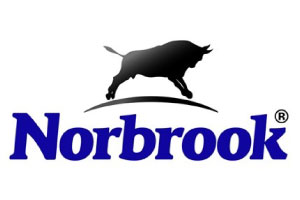Product Ref: NBCOM20 Category: C

Royal Mail Tracked 24 (Signed For)

Royal Mail Special Delivery Guaranteed by 1pm

| Category | POM-V |
| Temperature | Ambient |
| MA/VM/EU No: | 02000/4424 |
| Species |
|
| VMD Link | https://www.vmd.defra.gov.uk/productinformationdatabase/files/SPC_Documents/SPC_1458439.PDF |
| NOAH Link | |
| Dosage | Intramammary use. The syringe must only be used once. Partly emptied syringes due to the unsuccessful use should be discarded. The content of one syringe should be infused gently into the teat of the infected quarter every 12 hours after each of three consecutive milkings. Milk out the infected quarters. After thoroughly cleaning and disinfecting the teat and teat orifice with the cleaning towels provided, gently infuse the contents of one syringe into each affected quarter. Disperse the product by gentle massage of the teat and udder of the affected animal. In cases of infections caused by Staphylococcus aureus, a longer course of antibacterial therapy may be required. Therefore overall treatment length must be at the veterinarian’s discretion but should be long enough to ensure complete resolution of intramammary infection. Combined therapy for the treatment of bovine mastitis. In the situation where systemic treatment as well as intramammary treatment is necessary, especially in cases of serious clinical mastitis Combiclav Injection can be administered in combination with this product. For Combined Therapy the following minimum treatment regime should be followed: Combiclav Injection Combiclav LC Intramammary 8.75 mg/kg bodyweight (7.0 mg amoxicillin, 1.75 mg clavulanic acid) i.e. 1 ml/20 kg bodyweight. One syringe gently infused into the teat of the infected quarter 24 hours Description: arrowdown 12 hours Description: arrowdown 8.75 mg/kg bodyweight (7.0 mg amoxicillin, 1.75 mg clavulanic acid) i.e. 1 ml/20 kg bodyweight. One syringe gently infused into the teat of the infected quarter 24 hours Description: arrowdown 12 hours Description: arrowdown 8.75 mg/kg bodyweight (7.0 mg amoxicillin, 1.75 mg clavulanic acid) i.e. 1 ml/20 kg bodyweight. One syringe gently infused into the teat of the infected quarter Where necessary Combiclav Injection may be administered for an additional two days for a total of 5 daily injections. Overdose (symptoms, emergency procedures, antidotes), if necessary No adverse reactions are to be expected from an accidental overdose |
| Withdrawals | Meat & Offal: 7 days Milk: 84 hours Combined Therapy: When using this product and Combiclav Injection in combination: Meat and offal: 42 days Milk: 84 hours From the last treatment of Combiclav Injection following the minimum posology regime. |